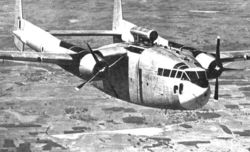I am a strong supporter for this project....but the project is getting mishandled just like the LCA. I wanted the navy to lead this project instead of the airforce and I would like to see 2 versions namely a single engine version and a double engine version of the AMCA.
AMCA will be twin engine as it has to be heavy and India doesn't want to develop complex engines like F35 but wants an engine which is simpler at 90-110kN thrust.
I am not particularly excited by AMCA. As it will be repeat of Arjun/LCA saga. Why? Where is the urgency to invest in establishing Gas Turbine facilities? Where is the Engine Flying Test bed? Tamilmani himself earlier stated that if the decision is taken now it will take 10000 crores of investment and 10 years of development time(which seems a very optimistic time frame given India is no France/Russia in terms of engine development capability & experience). I am miffed by ADA/GTRE, because when Manohar Parrikar was Defence Minister why they did not lobby hard for establishing more complete testing facilities? Even if france comes, GTRE will have ti still grapple with question of Flying Engine Test Bed.
US developed F22 in 1989. Are we that behind that we can't catch up even after 35 years? I don't think so. The so called state of the art is an absurd concept. The reality is that congress was being controlled by ISI and hence stalled several projects by cutting funds and forcing army and air force to change specifications every now and then.
If France comes to help in Kaveri engine. and Kaveri even runs upto 90kN, twin engine AMCA can be made. Test bed is needed only for developing new engines. If France comes up with Kaveri, India is only going to upgrade it to K10 version with 100-110kN thrust and leave it there. Test bed won't be necessary. Developing RAM is not an issue as with or without RAM, plane will fly and anyone can coat it with RAM paint anytime later. It is not necessary to do everything immediately. What matters is if the avionics, engine and airframe is developed. Even the avionics to some extent can be retrofitted. Even MiG21 can be coated with RAM, but that won't make it 5th generation! If that would have been the case, all the planes would be 5th generation.
I see no reason to say AMCA first flight can't take place by 2022. By 2022, Tejas Mk2 is also set to be completed and sent for trial runs. AMCA is set to be completed by 2027 (10 years from now) which appears to be reasonable considering experience of Tejas.
Engine development of Russia or France is not magical to say that despite India being able to get a 78-81kN thrust engine, India is so backward and won't be able to complete the engine in 10 years. France got their engine before 1990. Since engine technology hasn't advanced much, I don't understand why one has to be sceptical. India has access to foreign engines and has written the FADEC code in F404 engines by itself as it did not trust someone else (GE) of having the codes (software is our strong point too). India can also reverse engineer many things except for a few alloys and critical technology which it can develop considering the expertise is at level of France in 1980-90 (30-35 years lag). It would take India about 10 years to fully develop its K10 engine on its own from now or about 6-7 years with french assistance in Kaveri K9 engine.
France is not foolish to just give away the engine technology to India if India was not advanced enough. French is merely speeding up Indian engines by 3-4 years in return for a Rafale deal of about 100-150 rafales and additional 1 billion euro worth consultancy.
The incompetency of Tejas and Kaveri development is due to Congress being an ISI and Saudi funded party rather than real incompetency of scientists. One should not read into it as a failure of PSUs but foolishness of voting Congress for 60 years


